What Is a Big Bore?
Campfire Contention Continues to Burn On
other By: John Barsness | January, 26
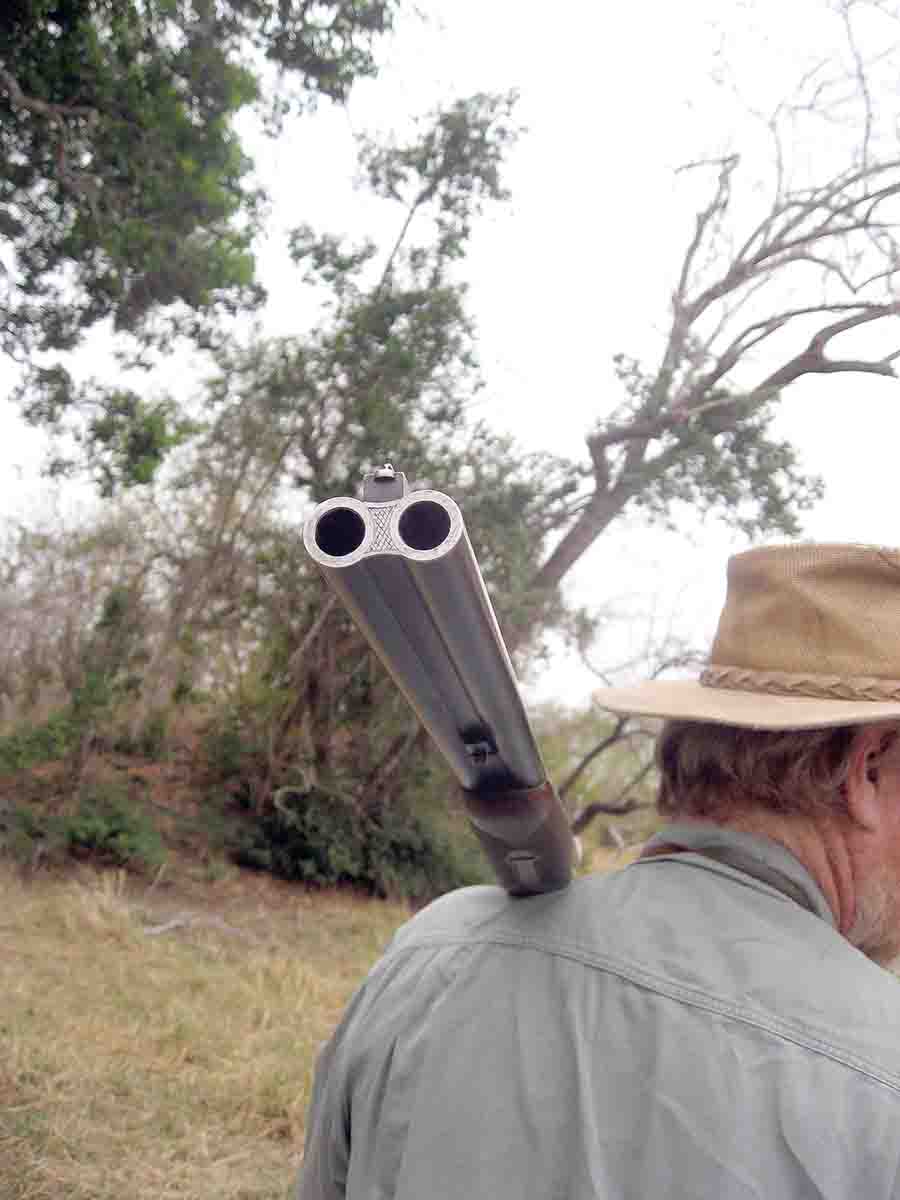
Bill’s rifle was unusual for Montana, a Ruger No. 1 single shot .375 Holland & Holland Magnum, with much of the bluing gone from the barrel due to years in saddle scabbards, and the nice walnut of the buttstock scarred by branches and rocks. On the second day I asked, “Do you carry a .375 because of grizzlies?”
He shook his head. “I carry it to finish off elk my clients gut-shoot with their brand-new .338s.”
Many hunters on their first guided elk hunt choose the .338 Winchester Magnum, because back home their hunting buddies told them to “use enough gun” instead of the wimpy .270 Winchester they’ve shot for years on whitetails. Now, there’s nothing wrong with using a .338 on elk, but the cartridge was introduced in 1958 due largely to Elmer Keith, the original big-bore boy among twentieth-century gun writers, who once wrote nothing less than a 250-grain, .33-caliber bullet was truly adequate for elk or big mule deer. This was due to the lack of premium bullets during the first 50 years of Keith’s life, and with standard cup-and-core bullets, 250 grains does penetrate deeper than, say, 130 grains, especially on animals larger than the average whitetail.
Over the past decade or so, however, I haven’t run into as many .338 fans in Montana, probably because more premium bullets are available than in 1958, and more hunters are willing to pay for them. The problem with the .338 Winchester Magnum isn’t its performance on game but its kick. A 250-grain bullet at 2,700 fps generates 40 foot-pounds (ft-lbs) of recoil in an 8.5-pound rifle, twice as much as a .30-06 with the standard 180-grain factory load at the same 2,700 fps. As a result, a substantial percentage of brand-new .338 users flinch, the reason Bill Beck carried an even bigger rifle to clean up their mistakes. And that’s one of several reasons many hunters regard the .338 Winchester Magnum as a big-bore cartridge.
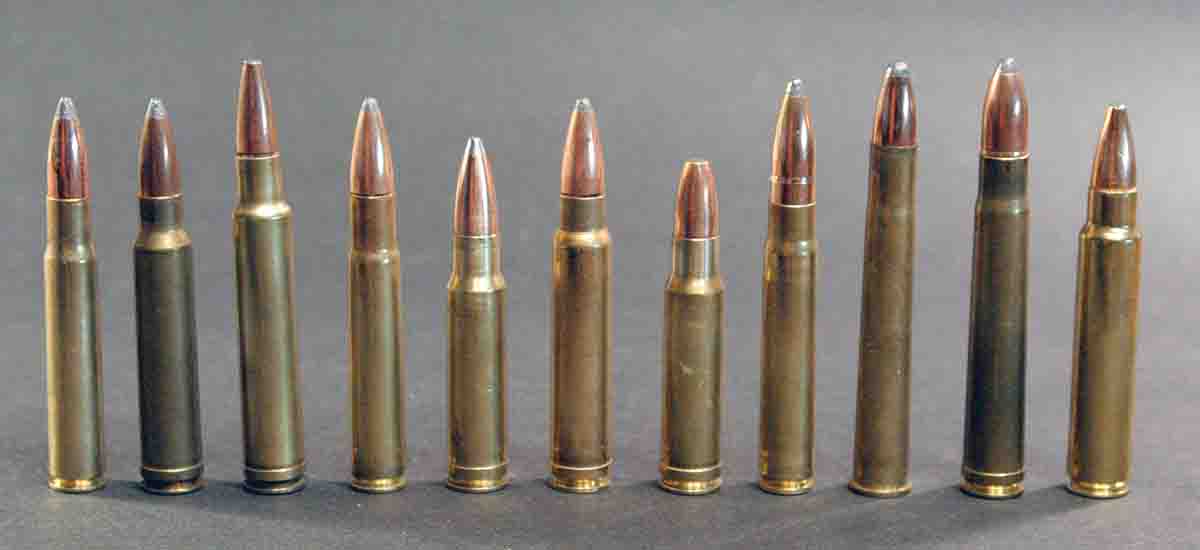
Defining a big bore actually resembles defining words. While many people somehow believe dictionary definitions are as unchangeable as the laws of physics, in reality they’re based on common use. Words arise from talking, not some committee of ancient professors arbitrarily deciding their “correct” meaning. Since common use changes over centuries and even decades, definitions change as well. This is why most modern Americans don’t understand Middle English, and how “like” recently became a synonym for “said”: “And she’s like, ‘Where is everybody?’” This new definition of “like” is even in the Oxford English Dictionary, considered by many the final word on words.
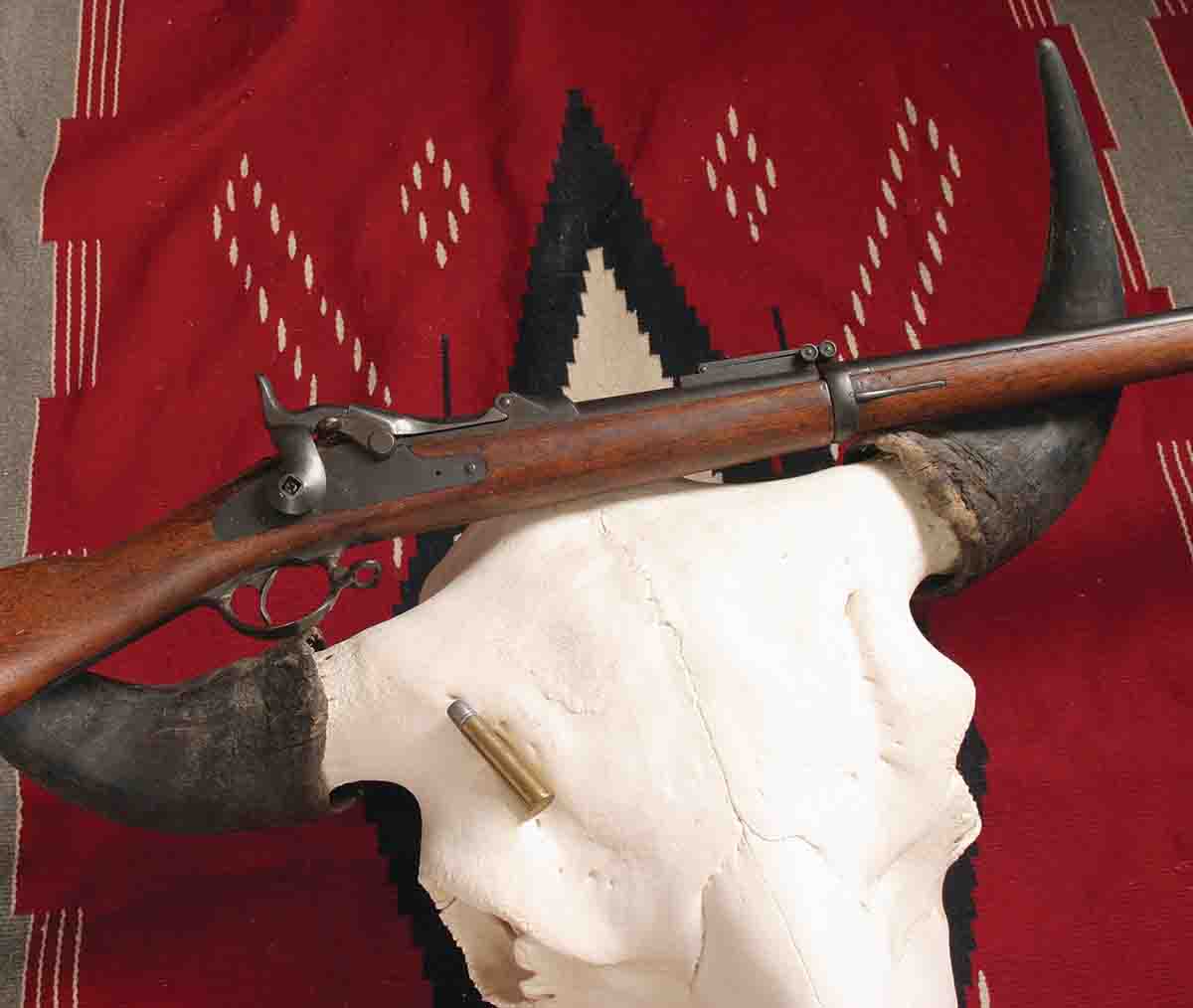
Somehow, for some hunters, John Taylor’s 1948 book African Rifles and Cartridges became the Oxford English Dictionary of rifle bores. As soon as somebody asks, “What’s a big bore?” somebody else answers, “As Taylor stated, it’s .45 caliber or larger.”
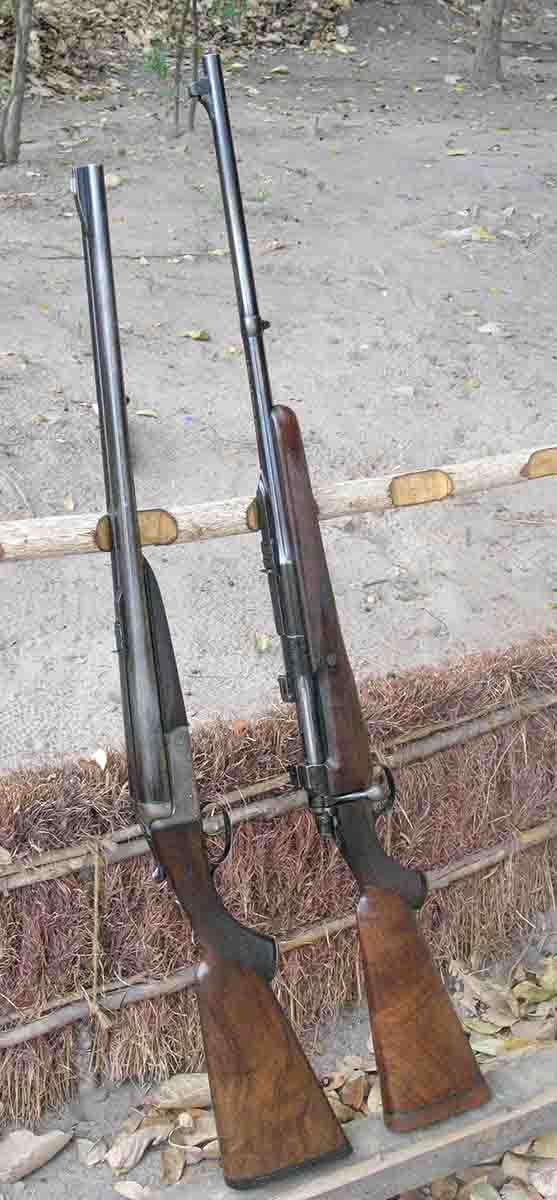
In fact, Taylor’s definition of medium bores was about as flexible and slippery as a campaign speech. Sometimes it appears to be based on the sectional density of specific bullets, since he includes the 6.5 Mannlicher-Schönauer’s 160-grain load in the chapter titled “Medium Bores,” and its 135-grain load in the “Small Bores” chapter. Yet he discusses the 140-grain .275 Rigby load in “Medium Bores” and the 180-grain .318 Westley Richards load in “Small Bores.” Some people suggest these fuzzy definitions disqualify African Rifle and Cartridges from being the final arbiter of the precise threshold of “big bore.”
There have also been historical changes in bore-size perception due to technological advances. Back when Dan’l Boone headed west to Kentucky, his .45-caliber muzzleloader was considered average. After fur trappers pushed west across the Mississippi River into bison and grizzly country, they came to prefer a minimum of .50 caliber, and some Hawkens had even larger bores. When practical black powder cartridge rifles appeared in the last half of the nineteenth century, .45 caliber was still average in the American West but was a smallbore in Africa, where 12- or 10-gauge rifles with .70-caliber plus bores were considered minimal for all-around use. When the first .45-caliber smokeless powder cartridges were introduced for African use in the 1890s, older hunters continued to refer to them as smallbores.
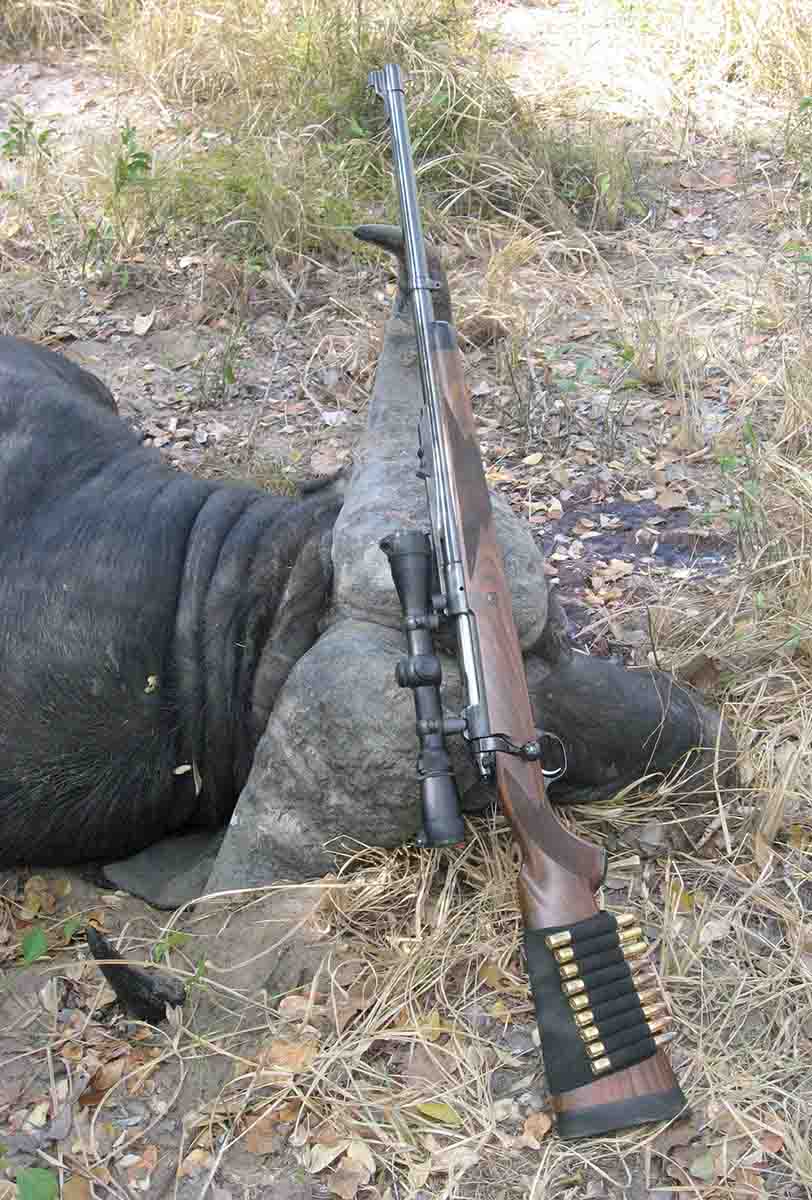
Perhaps it would be most appropriate to define big bore by common use, whether in different parts of the world or different parts of one continent. (This may sound like moral relativism but isn’t.) The use of the .338 Winchester and .375 H&H Magnums in the Bob Marshall Wilderness is a good example. A few hunters might insist they’re medium bores, due to having heard some definition somewhere that mediums are cartridges between .30 and .40 caliber, but most Montanans firmly believe both the .338 and (especially) the .375 are big bores.
Even this definition, however, varies in different parts of North America, due to most hunters having little experience with cartridges larger than the .30-06. Back when a .338 Winchester Magnum was my biggest rifle, I guided for a couple of years on a ranch in central Montana. One evening several mule-deer clients and I sat around shooting the bull. All but one were a group of guys who worked for a timber company in the Upper Peninsula of Michigan. They’d only hunted there and in Montana, but one guy from California had also hunted Alaska, as had I.
One of the Michigan boys asked what rifles we used “up there.” I said my .338 Winchester, and they nodded rather vaguely, apparently because there weren’t many .338s in Michigan. The Californian said “a .300 Weatherby Magnum.” Immediately a chorus of comments arose, ranging from, “That’s huge!” to “How hard does it kick?” But despite the opinions of those Youpers, calling any .30 caliber a big bore is stretching things, even if the cartridge does have the Weatherby headstamp.
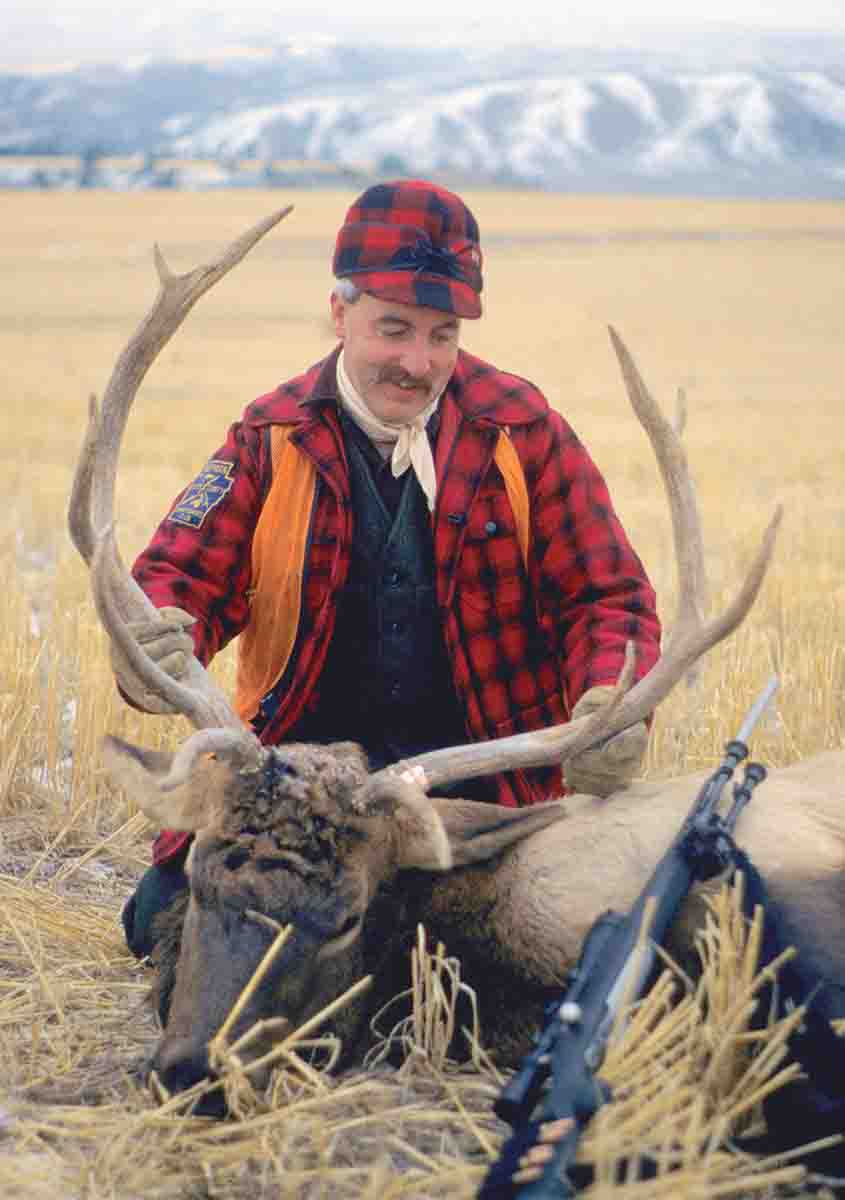
One of my hunting mentors grew up hunting the Catskill Mountains in New York, and when he went to college in Montana, he brought along not only his Savage 99 .358 Winchester but the certainty that it was a very powerful cartridge, adequate for “anything this side of a freight train.” He also bragged about its brush-busting ability, especially after a 250-grain Silvertip punched through a lodgepole pine sapling and killed a mule deer.
He eventually became a part-time outfitter, and some of his elk clients brought rifles chambered for the .338 Winchester Magnum and .340 Weatherby Magnum. After that he didn’t brag so much on his New York whitetail rifle, even though the .358 had taken more than one elk, including a big 6x6. But the bull had appeared unexpectedly across a sagebrush park, and four roundnose 250-grain Silvertips were fired before he finally found the range. His clients packing .33-caliber magnums wouldn’t have encountered the same ranging difficulties, though from Bill Beck’s experience, they might not have landed a 250-grain bullet in the correct area of an elk’s anatomy.
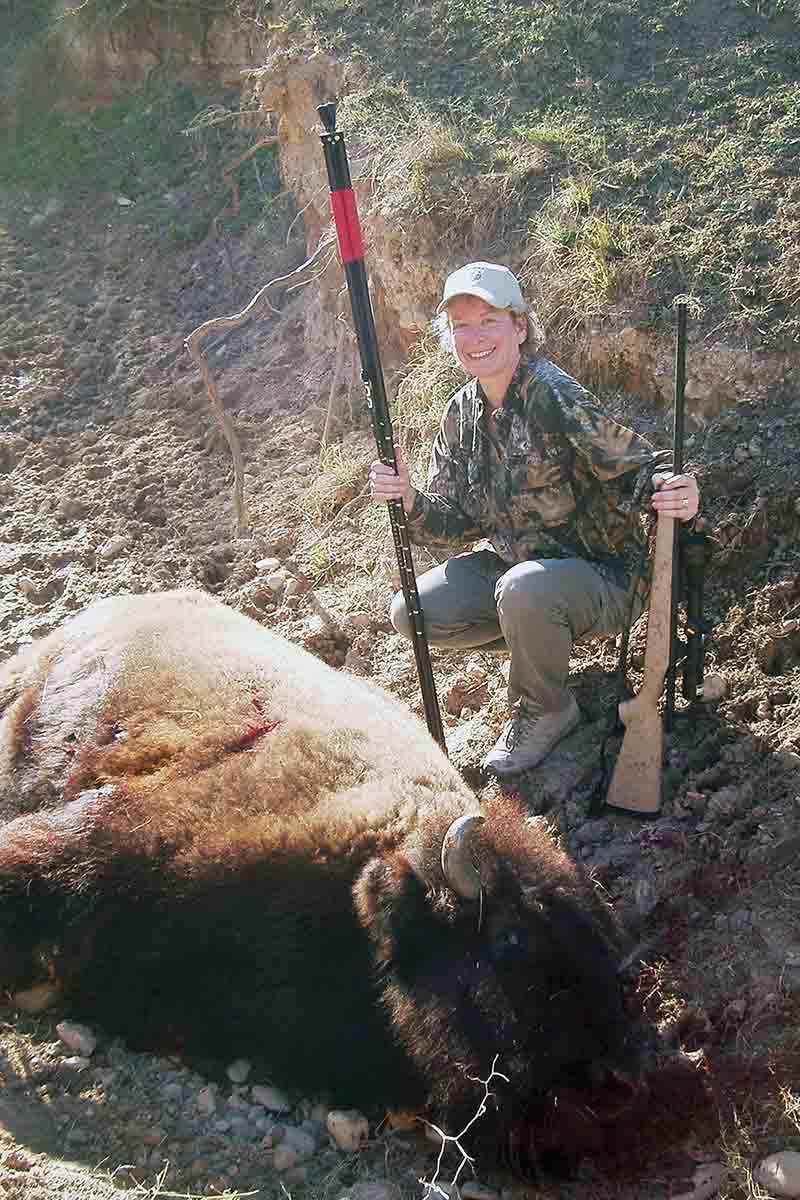
However, I’ve killed some whitetails, mule deer and blacktails with the .338 Winchester Magnum, in states from Texas to Alaska, but on average haven’t found it to kill bucks any quicker than the .35 Remington or .358 Winchester. In fact, in my experience bullets of .35 caliber and above do seem to hit game harder and more decisively than .30- and .33-caliber bullets, whether hunting whitetails with a .35 Remington or .358 Winchester, or African plains game with a 9.3x62 Mauser or .375 H&H. Is .35 one minimum level of “big bore” on some game?
I’ve also heard discussions of brush-busting bullets in Africa, where many professional hunters (PHs) are convinced roundnosed “solids” punch through vines and thorn branches more reliably than “softs.” Of course, they often qualify this by suggesting only bullets of a certain weight and diameter will do the job, with 300 grain and .375 the usual minimums, probably due to .375 being the most common legal caliber for large, dangerous game. Most PHs then qualify their statements further by saying solids of at least .40 caliber and 400 grains work far better.
Please note most. American hunters often believe African PHs are of one ballistic mind, perhaps because they read John Taylor, or know exactly two PHs who happen to agree. I’ve gotten to know a bunch of PHs over the decades, and perhaps the most contentious evening I’ve spent in Africa was among several who consumed considerable beer while arguing about cartridges and bullets. In comparison, most North American elk camp debates about the .270 Winchester have been pretty mild.
Among today’s African PHs, .450/ .400 seems to be the dividing line for big-bore performance, at least among those who haven’t accepted John Taylor’s book as the “Oxford English Dictionary for Resolving Late Evening Safari Arguments.” In fact, many PHs of long experience don’t get as excited over the difference between, say, .416 and .458 bullets as many American safari clients.
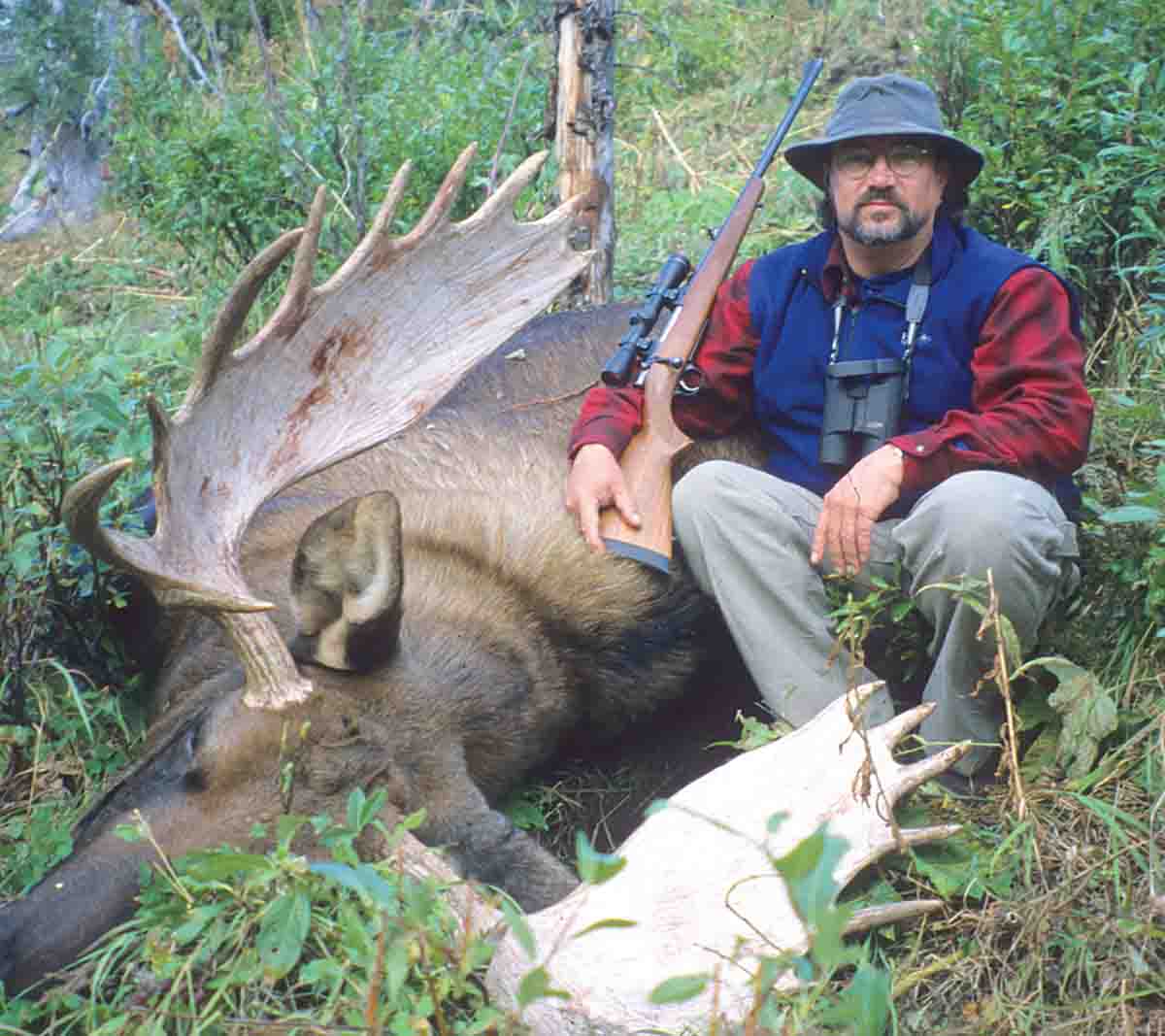
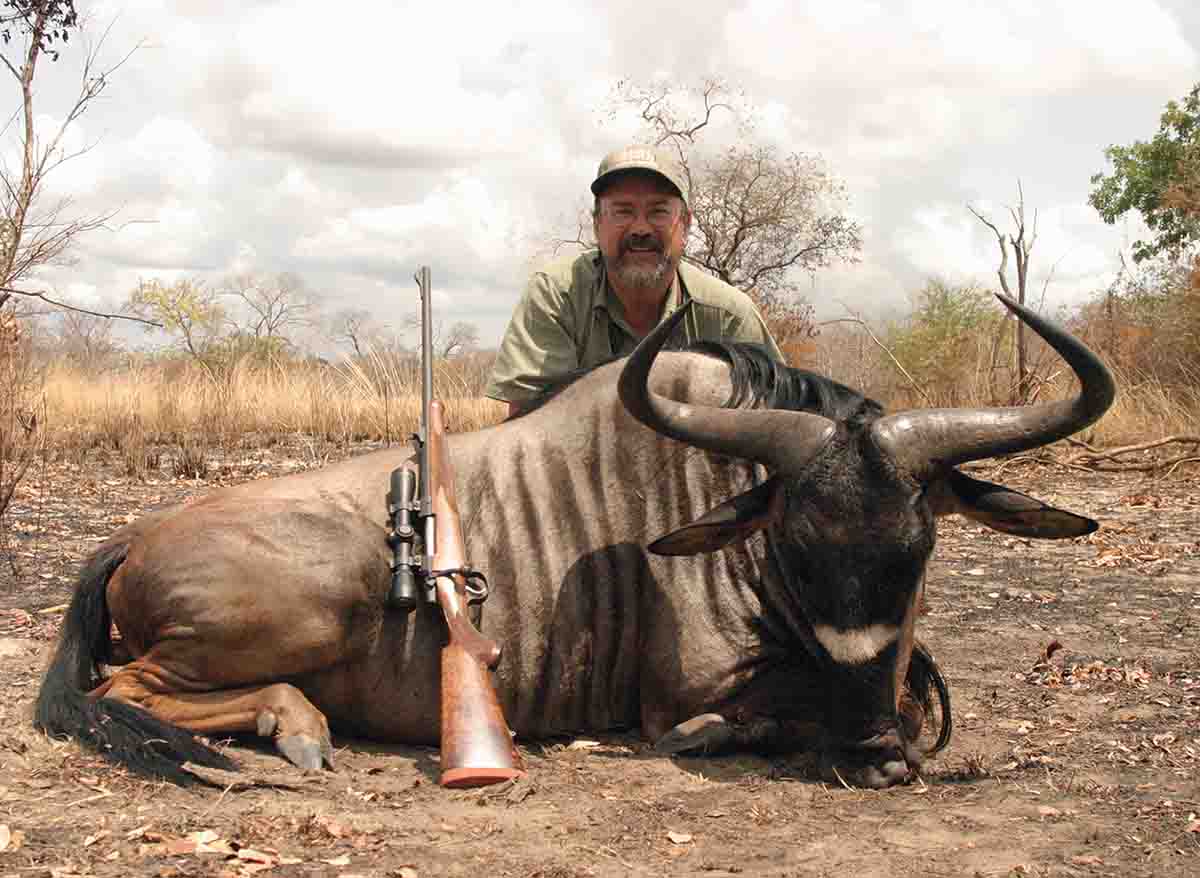
“I estimate that over a fifty-five year career I have used .470s for four years and a .458 [Winchester] for maybe six to eight years. The Rigby .416 was always my weapon of choice and if I was to start a hunting career all over again the first rifle I would acquire would be a Rigby .416.”
This was just an interesting anecdote to me until a few years ago, when I hunted with renowned PH Luke Samaras’s outfit in Tanzania. Samaras started guiding hunters in Kenya and Tanzania before both countries banned safari hunting in the 1970s (Tanzania’s ban was eventually lifted.), so he’s seen quite a bit of African hunting. On this trip Luke was guiding Bob Nosler after elephants, which happens to be Luke’s favorite game, and he carried a Rigby bolt action in (what else?) .416 Rigby. This was despite the oft-heard contention among American safari hunters that modern elephant hunting requires a “big-bore” double rifle, especially in the hands of the PH, because of the extremely thick cover big bulls normally inhabit today.
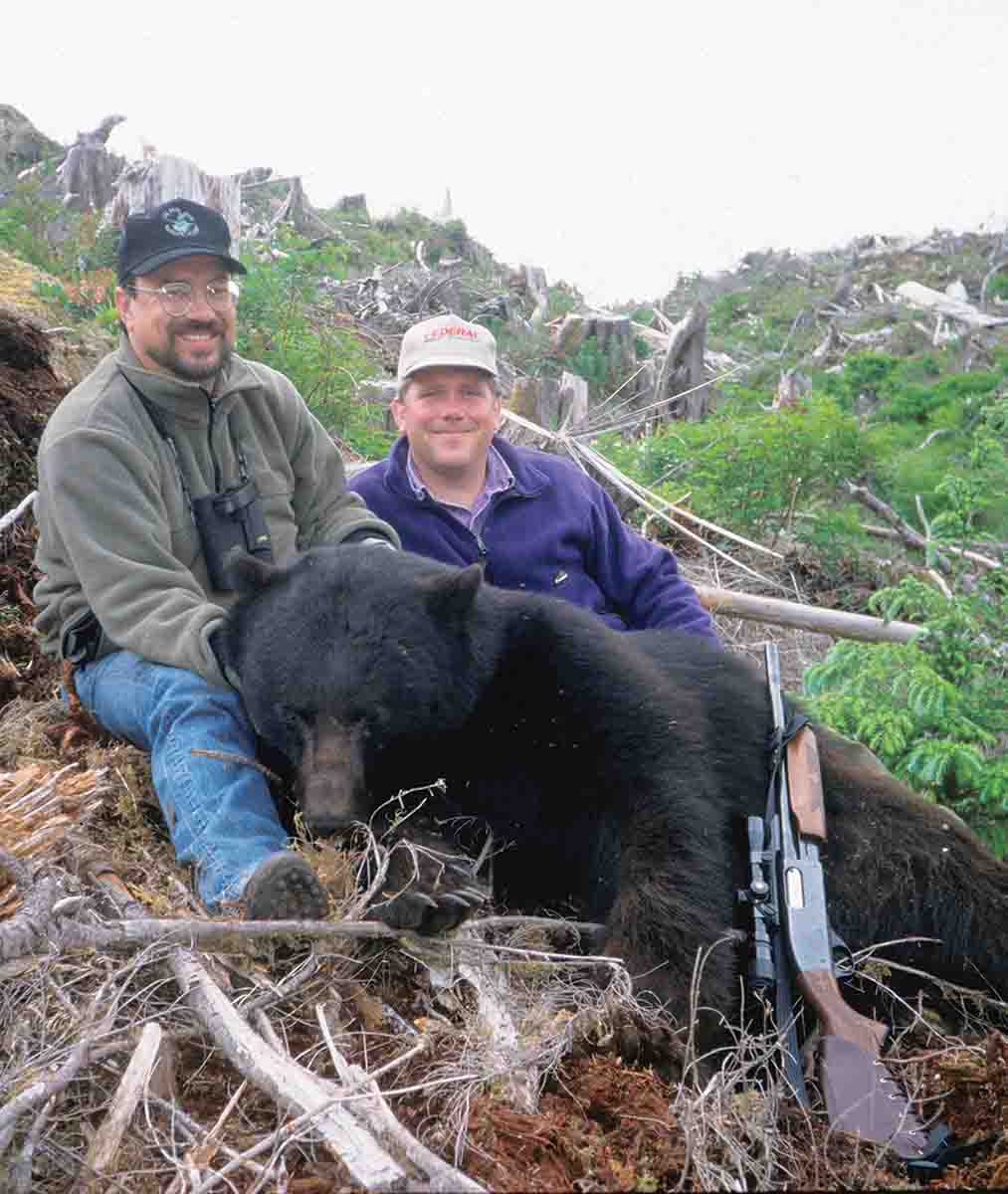
So is there a single definition of “big bore,” or can it be a .358 Winchester in New England, a .375 H&H in Alaska and a .416 Rigby in Africa? Some would say yes, and some would say no, which is what hunters have done ever since somebody devised a new method of knapping spear points, and one reason hunters sometimes don’t get to bed nearly as early as they should.

